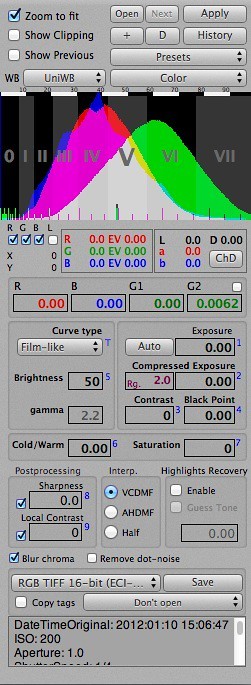For anyone who ETTR I see the value. It's not "non-existant" and I think that this sentiment goes back to this huge misconception that a raw file does not reflect a specific
native white point because there is not specific white point
correction.
UniWhite balance should be, in theory, the white balance of the sensor itself without any compensation for light qualities. It is kind of hard a lot of times to see what the RAW processor is actually doing, because the controls are obnoxiously hidden behind "user friendly" controls that automate RGB translations behind your back - and do so destructively. This dirty secret allows you to shoot in any lighting scenario without compensating for exposure - but may result in noise.
If there was a RAW processor that allows you to manipulate RGB data off the sensor without this predetermined and automated means, then you could adjust white balance subtractively. Fortunately for me, I use RPP which permits this; notice all the zeros:
But then why do this digitally at all? Why not just use CC filters instead? A nice strong magenta CC filter should counter the emerald green which I suspect to be the native white balance of the sensor - provided that there isn't even more shenanigans I'm unaware of. Correcting optically would be the best case scenario as RGB elements are being compensated through increased exposure, rather than by decreasing or increasing compensation after the fact - more real data from the scene means better information for the image.
Unfortunately, my camera does not permit an extreme enough WB correction to make any use of UniWB, and thus, my crazy-tacos subtractive color compensation theory will have to wait and see another day.
BUT As far as I can tell UniWB is real - and why not? If Daylight and Tungsten WB is compensating from some specific value, that specific value must be as real as these compensations. However much effect it has is another question entirely.













